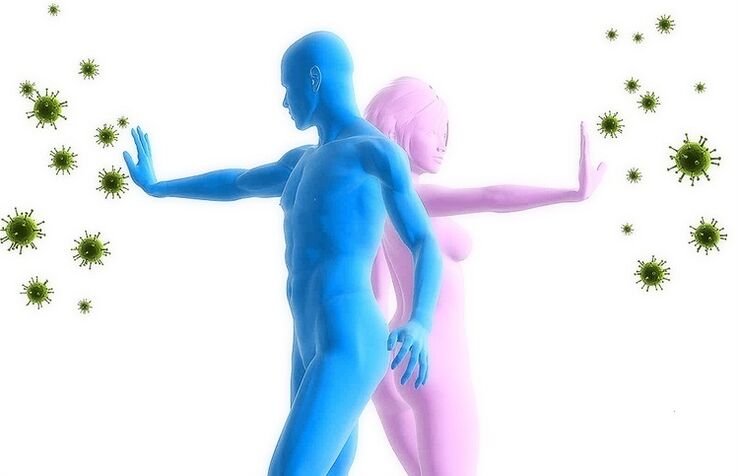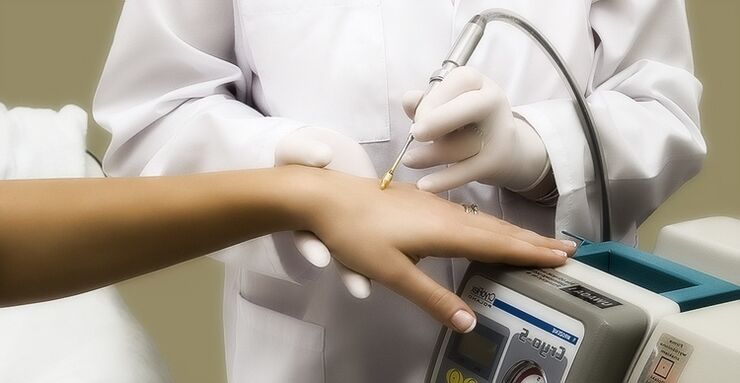Human papillomavirus is an oncogenic disease. The main manifestations of HPV are the formation of warts, papillomas and condylomas on the skin and mucous membranes. Both women and men are affected by the virus.
Causes of the emergence and activation of HPV
Notice! The main reason for the appearance of papillomavirus in the body is infection from an infected person.
Factors that provoke infection include:
- weakened immunity;
- Bad habits;
- frequent and severe nervous shocks;
- viral infections;
- pathology of the gastrointestinal tract;
- frequent change of sexual partners, unprotected sex.
Can human papillomavirus be cured?
HPV in the active stage of development is treatable.
The main goal of treatment is to eliminate the symptoms and strengthen the protective mechanism of the human body.
Different treatments may be used depending on the type of virus, symptoms, and complications.
Can HPV be permanently cured?
A feature of HPV is that once it enters the body, it settles there forever. At times when the body has a strong defense mechanism and is not exposed to the above risk factors, the virus is in a dormant state and is not activated.
With a decrease in the immune system, non-compliance with hygiene rules, deterioration in health, the papillomavirus can reactivate.

Methods of infection with papillomavirus
Infection with the HPV virus occurs through direct contact with an infected person through the mucous membranes and skin. There are several routes of infection:
- The main way is sexual contact. The probability of transmission of the papillomavirus from an infected partner during unprotected sex is 60-70%. If you change partners frequently, the risk increases significantly. With microtraumas on the mucous membranes, infection is possible even during a kiss or oral sex;
- HPV infection also takes place in the home: when using the same towels, dishes and hygiene items with an infected person. In public saunas, baths and swimming pools there is a risk of becoming infected with papilloma viruses;
- Vertical transmission of the virus is also possible - from mother to fetus during childbirth.
Why is human papillomavirus dangerous?
All HPV variants can be conditionally divided into two categories: low and high oncogenic risk viruses. Groups of the second category can develop into an oncological disease.
Notice! HPV poses the greatest risk to women: highly oncogenic virus strains are most predisposed to them.
In women, the papillomavirus can cause a number of diseases related to the reproductive system:
- Pathology of the cervix: erosion, leukoplakia, adenocarcinoma, cancerous tumors;
- Oncology of the external genitalia, anal area.
The development of the disease is also accompanied by the appearance of warts and papillomas on the genitals, limbs, armpits and neck. Neoplasms cause discomfort, interfere with hygiene and the conduct of a habitual lifestyle, so they should be discarded.
In men, the risk of developing cancer with HPV is lower, but not excluded. In addition, acute-angled papillomas can form on the penis, which cause discomfort and interfere with normal sexual activity. Such neoplasms should be removed immediately.
diagnostic methods
Detection of the disease usually begins with a visual examination by a doctor. During the examination, mucous membranes and integuments are examined, especially carefully it is necessary to examine the areas where warts and papillomas most often form: genital area, armpits, neck.
The main methods used to diagnose HPV include the following:
- Women must necessarily undergo colposcopy, examination of the cervix and vagina, cytological tests (scraping the mucous membranes). If there is a suspicion of oncology, a biopsy may be additionally prescribed;
- PCR analysis (polymerase chain reaction). Allows you to identify the DNA of the virus from any material provided for analysis;
- The Digene test is a more accurate analysis. Based on its results, the papillomavirus can be detected, its type can be recognized by DNA, and the degree of malignancy can be determined.
General treatment regimen for HPV
There are currently no consistent international protocols for the treatment of human papillomavirus. Two-component treatment regimens showed themselves best: they combine the removal of viral lesions by surgical methods and the simultaneous passage of special antiviral therapy. The effectiveness of this approach to treating HPV is up to 90%.
Features of treatment in children
When HPV is activated in a child, doctors first resort to conservative methods of therapy: the appointment of immunomodulators and vitamins, as well as local treatment of rashes with ointments, compresses.
Surgical intervention is usually resorted to only in those cases when the growth of warts and papillomas is detected during observation.
Features of treatment during pregnancy
Notice! HPV during childbirth does not have a pronounced negative impact on its development and the course of pregnancy in general.
The main recommendations for the treatment of papillomavirus during pregnancy:
- If the virus is detected before pregnancy, you should be treated immediately. This will normalize immunity and avoid thrush and other infections;
- It is desirable to plan the onset of pregnancy at the end of the second cycle after the completion of treatment;
- The course of HPV treatment during pregnancy should begin no earlier than the 28th week of pregnancy - the period when all the organs of the child are formed. This will help avoid the negative effects of drugs on the child's body.
Papillomavirus Treatment
The main treatments for HPV are:
- taking certain antiviral drugs;
- a course of immunomodulators;
- Removal of neoplasms (papilloma, warts) surgical;
- Relieving the symptoms of the disease using traditional medicine.

antiviral therapy
Important! The choice of drugs depends on the type of virus and the characteristics of the body. Only a doctor can prescribe a course of therapy and dosage of drugs, self-medication can aggravate the situation.
Immunomodulatory drugs
The appointment of immunomodulators should be carried out by a doctor according to the patient's immunogram - this will give a faster and more stable result.
Surgical Access (Growth Removal)
The main goal of HPV surgery is to remove cells from the body that have been altered by the virus.
Removal can be done in several ways, depending on the characteristics of the disease and the doctor's indications:
- electrocoagulation. Depending on the HPV group, treatment effectiveness ranges from 80% to 95%;
- Laser rash removal. High efficiency but high probability of recurrence. In addition, after the procedure, the wounds heal for a long time - up to 4 weeks;
- radio wave surgery. It is used to remove individual formations;
- cryotherapy. efficiency - up to 65%, relapse occurs in 40-50% of cases;
- chemo-destructive agents. Applicable only for skin rashes in the genital area. Relatively low efficiency - no more than 40%.
home remedies
Notice! Alternative medicines should not be taken as a complete method of treating HPV. However, they are an affordable and harmless way to weaken the active manifestation of the virus.
The most effective against papillomavirus are such folk remedies: fresh potato juice, steeply brewed thread, a mixture of garlic and vinegar, Kalanchoe leaves, tea tree oil.
They should be used in the form of compresses, dressings for external manifestations of HPV - papillomas, warts.
Prevention of HPV recurrences
The main goals of preventing the recurrence of warts and papillomas are to strengthen immunity and maintain hygiene at home and in public places. Recommended:
- adhere to proper nutrition;
- undergo vitamin therapy;
- observe a normal way of working, get enough sleep and relax completely;
- increase in physical activity.
Important! Vaccination is an effective way to prevent HPV reactivation - it can be used to protect against the most dangerous groups of the virus for a long period of time.

























